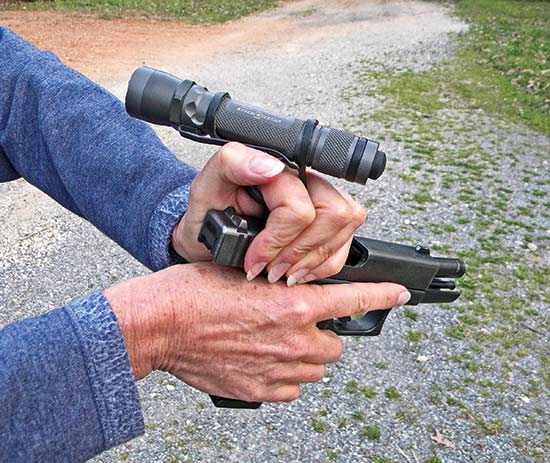Why Do I Need Training?
My Grandpa Already Showed Me How To Shoot”
You know self-defense is a personal responsibility. You understand the best tool to defend against a violent attacker are firearms. Now it’s time to get training on the skills you need to use that firearm safely — always your primary concern — and efficiently, which is mandatory if you have to fight.
You can call it self-defense or personal protection, but what we’re really talking about is fighting. A threat is intent on harming you, your family or friends. Escape and avoidance are not possible. You’re forced to stop them using the one language everyone understands — violence. This is a fight. The only reason we call them “defensive” skills is because we didn’t start the fight.
Using firearms for self-defense is a martial art. Developing the physical and mental skills necessary to fight with the firearm will require training, just like any traditional fighting discipline. Most of the skills and principles used with firearms are contrary to our natural instincts, making it difficult if not impossible to learn on your own. You’re gonna have to get some training from a professional instructor.
“But,” you say, “I’ve been shooting since I was a toddler. Why do I need training?” The proper threat response should include moving, communicating, using cover, shooting if necessary and thinking. “Shootin’ n’ huntin’” doesn’t prepare you for this. In fact, the right response might change the threat’s mind about what they thought they were going to do. This is called a psychological stop — and you don’t have to shoot. If you’re forced to shoot the threat — call it a physical stop — you’re looking at combative marksmanship. This will likely include accurately engaging a moving target while you’re moving and/or using cover for protection.
Details
Moving and communicating under stress are not natural. The principles for using cover and the protection it provides are contrary to what you would instinctually do. You’re going to need an instructor to tutor you. A professional instructor spends years studying, researching, training and honing their skills. Instructors also invest time in learning how to impart this knowledge to others.
When it comes to using firearms defensively, the devil is in the details. An instructor or teacher can show you what to do, and why it’s done a certain way. A good instructor/teacher will help you cultivate the proper mental attitude. The right mindset helps you solve the problem as efficiently as possible, whether it’s through avoidance and escape, or engaging the threat if needed. This is instruction going well beyond what is covered in a state mandated concealed carry class for a permit.
What To Expect
A class should start with safety. You learn the four safety rules, applied anytime you’re handling firearms — but especially in a violent confrontation. There’s nobody “special” enough the four safety rules don’t apply.
You’ll learn to use a proper fighting stance. The stance serves as the foundation, providing stability, the ability to recover efficiently from recoil and move in any direction necessary. The stance also includes how to position the arms and the correct way to grip the gun, which is different between revolvers and semi-auto pistols, for instance.
You’re introduced to the proper way to draw the pistol from concealment. The class teaches weapon manipulations — loading and unloading, reloads and malfunction clearances, under stressful conditions like in the dark and using only one hand. Most confrontations occur in low light environments. Low-light techniques are definitely something that can’t be learned on your own. The same goes for using cover for protection, or how to search for a family member in a structure containing a threat. These same techniques are used to safely escape an area containing threats. Another advantage of training is the opportunity to test and evaluate your gear, determining if your equipment works the way it should.
In future columns I’ll discuss the principles and techniques for responding to a threat. Why do you need to move, communicating, use cover and shoot as or if necessary? What are the techniques used for low-light environments? How do these skills apply to using cover, or searching inside a building? And, yes how to find an instructor who teaches the skills you need for personal protection.
We’re at the beginning of building a foundation for you; helping you understand what’s ahead. You’ll need to reach out for hands-on training at some point — so keep this in mind as we move forward. Just assume it’s a mandatory part of this learning process. Because it is.






